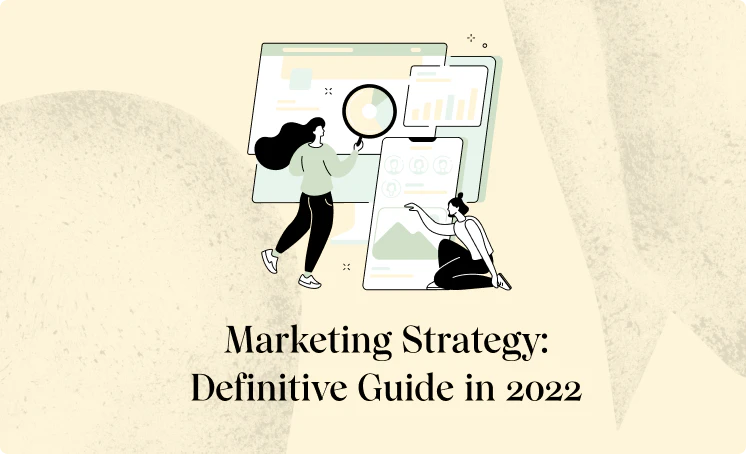Introduction
While an estimated 1M merchants sign up for Amazon each year—fewer than 10% ever do more than $100k in annual sales and only about 1% hits the $1M mark.
Sure, anyone can sign up and sell some products, but turning Amazon into a scalable, sustainable source of income is pretty darn hard.
Fulfillment by Amazon, or FBA, is fast becoming a requirement for serious merchants—and for good reason.
FBA sellers benefit from a long list of perks–including access to Amazon’s world-class logistics, streamlined inventory management, and Prime-eligibility—crucial for reaching the 150M subscribers who now consider two-day shipping standard.
Per Statista, 73% of US sellers are currently enrolled in the FBA program–which means, you’re competing against sellers who offer the official “Amazon experience.”
Here’s what you need to know about building an Amazon FBA strategy that gets results.
What Is FBA?
Fulfillment by Amazon (FBA) is a program that allows sellers to outsource order processing, picking, packing, shipping, and storage to Amazon.
The basic process looks something like this:
- You ship your inventory to an Amazon fulfillment center
- Amazon receives the order and stores your products
- Customers place their orders through the platform
- Amazon picks, packs, and ships the order
Amazon also handles customer service tasks like fielding questions and handling returns, exchanges, and complaints.
Advantages Of Using FBA
Most sellers operate on Amazon as direct-to-consumer businesses. Meaning, they manage the entire process themselves–storage, sorting, picking, shipping, plus customer service, marketing, and maintaining a presence on other channels.
While this approach (also known as Fulfillment by Merchant, or FBM) allows retailers to maintain more control over their business, it can be hard to keep up with the demands of the platform.
FBM sellers lack the customer data required to maintain high seller ratings, adapt to the platform’s constant changes, and respond to trends and evolving customer demands.
Here’s a quick look at some of the benefits of using FBA:
YOU’LL HAVE MORE TIME TO GROW YOUR BUSINESS
More than 80% of Amazon merchants sell already their products on other platforms.
And, according to Jungle Scout’s 2021 State of the Amazon Seller report, 33% of respondents say they plan on expanding to other channels and 21% say they have plans to launch their own store.
While “omnichannel retail” has been “a thing” for a while, it’s becoming critical for e-commerce brands if they want to survive in a fragmented digital ecosystem.
Managing your Amazon storefront requires more effort than many of the other channels out there and can easily eat up the lion’s share of your working hours.
FBA allows companies to pass some of that workload on to Amazon, which handles orders as a first-party seller. That way, brands can focus on growing their digital footprint on other channels like Shopify, eBay, and even Instagram.
FAST-TRACK THE TRUST BUILDING PROCESS
One of the biggest benefits of FBA is, it’s essentially a shortcut for earning customer trust.
All listings include three magic words: “Fulfilled by Amazon,” which gives customers immediate assurance that they can trust your brand.
This factor is huge. If you’ve ever launched a business, building credibility from scratch with your audience is a pretty significant obstacle. You’re buying ad space, giving product away for free, and waiting for those investments to pay off.
For customers, Amazon’s seal of approval means they don’t have to dig around online to find out what people think about your products or worry about shipping costs, delays, and poor service.
Instead, they’re more likely to purchase the first product that matches what they’re looking for–which let’s be honest, is no small win for retailers.
Additionally, if they’re buying multiple items at a time, there’s a good chance those items will be shipped together and arrive at the same time–regardless of brand or seller.
AUTOMATIC PRIME ELIGIBILITY
Amazon owns nearly half of the global e-commerce market, boasting more than 300M active users–112M of whom are Prime subscribers.
Customers are more likely to buy Prime-eligible products both because of convenience and perceived trust. Prime Eligibility status has a similar effect on customers as listings that are “Fulfilled by Amazon.”
It immediately tells customers that they can count on their order arriving within two days and that they won’t be paying any additional shipping fees.
EARN A SPOT IN THE COVETED BUY BOX
The Amazon Buy Box is the white box that appears on the right of the product detail page where shoppers can add items to their cart.
82% of Amazon sales come from the Buy Box and that number is even higher on mobile. As such, getting that position is critical.
But not every seller is eligible for the Buy Box.
- You must have a Professional Seller Account
- Your products must be new
- Products must be in stock
- You need to opt into “Buy Box Status” box from your Seller Central dashboard
Oh, and you’re also competing with other sellers–just like you are with organic rankings and sponsored product ads.
See, when multiple sellers are selling the same SKU, they’re competing for the same piece of digital real estate.
So, Amazon’s algorithm needs to make a choice–and looks at factors like ratings, product availability, etc.–to determine which listing gets the slot.
The losers, unfortunately, are relegated to the “other sellers” list which appears beneath the Buy Box.
While Fulfillment By Merchant (FBM) sellers aren’t barred from the Buy Box, it’s a lot harder to achieve that coveted status on your own as Amazon only awards the slot to sellers with extremely high scores across all seller metrics offering the best price.
FBA participants have a major advantage as Amazon has near-perfect seller metrics across all variables. So naturally, FBA is your best bet at securing your spot at the top.
Disadvantages Of FBA
At its core, FBA is pretty straightforward: you sell your products and Amazon takes it from there.
But–there’s more to it than meets the eye.
For one, while Amazon handles customer service and fulfillment, that doesn’t mean you’ve outsourced your entire list of responsibilities.
In fact, FBA introduces a number of new, Amazon-specific complications and costs–things you’ll need to stay on top of to avoid plunging into debt and ruining your reputations–on Amazon and off.
SO MANY FEES
The primary disadvantage of Fulfillment by Amazon is it’ll cost you. We’re talking fulfillment fees, storage fees, removals, returns, a monthly subscription, and a whole lot more.
For established brands, these fees are often worth it–you’re paying Amazon to do a job they probably do a lot better than anyone inside your company.
However, if you’re not prepared to take on the expense or aren’t selling enough to cover the costs and turn a profit, it’s better to hold off.
YOU’LL GIVE UP SOME CONTROL
Putting Amazon in the driver’s seat is largely beneficial for brands. Very few, if any, have access to Amazon’s resources or a streamlined logistics system anywhere near as efficient or reliable.
Still, it is a trade off.
If you’ve grown a business from scratch, it can be hard to hand things off to Amazon.
You no longer have oversight of the end-to-end process–and worse, you no longer own the customer relationship. That means, if something happens and your account gets shut down, you’ll lose access to valuable customer data you can use to improve your products and overall experience.
Additionally, if a core part of your business depends on having a personal connection with your customers, it might not be right for you.
COUNTERFEITERS RUN RAMPANT ON THE PLATFORM
Unfortunately, counterfeits have become a major problem for Amazon–and its sellers. Bad actors can sell fake products using your products’ legitimate ASINs.
Then, when customers inevitably leave negative reviews, they’re leaving them on your product page–which of course means there’s the risk of serious reputational damage.
Even if page visitors are aware that your account was hijacked, they may be hesitant to order from you, not wanting to risk receiving a counterfeit product.
Amazon’s Brand Registry program can help you protect your brand, but not every brand is eligible and some counterfeiters still manage to slip through the cracks.
How Much Does Fulfillment By Amazon Cost?
The short answer: it depends.
FBA costs vary month to month based on the amount of Amazon resources you use to process orders and handle customer requests.
Sellers can expect to pay a monthly service charge, plus shipping, storage & fulfillment fees no matter what.
Later, they may encounter return processing, long-term storage, and inventory removal. Often, these fees are a direct consequence of over-ordering, poor inventory management, or a lack of planning/research–though that’s not always the case.
Here’s a breakdown of what Amazon charges FBA sellers and how much.
- Monthly subscription. Amazon allows FBA users to choose between enrolling in a monthly Professional Seller plan for $39.99 or a free plan that charges based on what you sell. Those who opt-out of the monthly flat-rate pay $0.99 per sale, plus a selling fee that ranges from $0.45 to $1.35 per unit sold.
- Fulfillment. Amazon charges FBA users for finding, picking, and packing products.
- Shipping. FBA fees cover the costs of shipping products to customers. However, you’re on the hook for shipping those products to Amazon. As is the case when shipping items to your own facility, freight costs vary by carrier and where items are coming from.
- Labeling. Amazon sellers must meet strict labeling requirements for all inventory that comes through its fulfillment centers. If you fail to meet those guidelines, expect to be charged a $0.20 labeling fee per unit.
- FBA prep service. You have the option to handle prep in-house or outsource the task to Amazon for an additional fee. Keep in mind, if you choose the DIY option and fail to meet Amazon guidelines, you’ll incur what’s called an unplanned prep fee. Fees vary by product and range from $1.00 to $2.20 per unit.
- Storage fees. Storage costs range from $0.48 to $2.40 per cubic foot. Prices fluctuate based on the season, as well as the size and weight of the products.
- Long-term storage. If items hang around for too long, Amazon charges long-term storage fees for taking up precious warehouse space. FBA users either pay $6.90 per cubic foot or $0.15 per unsold unit–depending on which value is greater–and charges kick in after one full year.
- Stock removal. If products aren’t selling, you have the option of taking them back or having Amazon dispose of unsold stock (best in cases where items are expired or damaged). FBA charges $0.50-$0.60 per unit.
- Return processing. Basic return processing is free across many categories, except for those promising free returns. In those cases, FBA charges sellers a return processing fee equal to the original fulfillment fee. If returned products need to be repackaged for resale, Amazon charges a repackaging fee, though they don’t disclose the official amount in their fee structure.
What To Include In Your Amazon FBA Strategy
While this isn’t a comprehensive list of best practices, focusing on getting these four foundational elements right will help you set the stage for FBA success.
RESEARCH
To be successful with Amazon FBA, you’ll need a plan. But—in order to come up with that plan, you’ll need to do some digging.
Who are you trying to reach? What is your audience looking for? What forces are shaping the current market—and the competitive landscape? Are there any emerging trends you can capitalize on? The list goes on.
At this stage, your goal is to build a foundation that can support your FBA strategy. Here are a few areas you should focus on:
Get to know your competitors
Competitive intelligence (CI) plays a critical role in your Amazon FBA strategy. It allows you to establish benchmarks so you can better understand where you stand relative to the rest of the market.
It also helps you gauge what kind of messaging and brand/product positioning resonates with your target audience.
Look for broad market trends
Here, your goal is to get a sense of what your audience is talking about right now—at the macro level.
• Identify broader trends with tools like Google Trends, Exploding Topics, and Alexa.
• Use social listening tools like BuzzSumo, Sprout Social, and Mention to identify trending content, brand mentions, and understand audience sentiment.
• Hang around Q&A platforms like Reddit and Quora to get a better sense of what questions people have about specific pain points and products.
Research products and keywords
Competitor and market insights can point you in the right direction but the best way to get data on what products are most likely to perform well is by using keyword research tools.
Understanding what shoppers are searching for can provide direct insight into which items are currently high in demand.
You can use traditional SEO tools like:
- Google Search Console (GSC). If you sell products through your website, you might look toward GSC to learn more about the search queries customers use to find you—and which ones contributed to the highest share of sales.
- Ahrefs. Ahrefs is an all-in-one SEO/PPC tool that offers a ton of keyword data. What makes this platform unique is it allows you to focus on Amazon keywords—not just Google and YouTube.
- SEMRush. SEMRush is great for researching keyword volumes, trending topics, and questions consumers are searching for. Though it’s designed for SEO and PPC pros, these insights can easily be used to inform your Amazon strategy, as well.
- Keywords Everywhere. A freemium browser extension that displays a list of related keywords any time you perform a Google search.
Or, you can invest in a scouting tool. Scouting tools are more e-commerce-specific—many come with keyword research tools but offer different insights than the all-purpose SEO platforms that typically cater to marketers.
These tools help you find product ideas based on factors like profit margins, retail price, category, and Amazon seller metrics like search rank, placement, and reviews.
A few options:
- JungleScout. JungleScout helps Amazon sellers discover high-performing keywords, run competitive intelligence reports, and reverse engineer your competitors’ keyword strategy.
- AMZScout. AMZScout promises to make it easy for sellers to find profitable products to sell on Amazon. Users gain access to a database with 550M+ SKUs, detailed product analytics, and competitor monitoring.
- SellerApp. SellerApp is designed to help Amazon sellers boost sales and offers a suite of features that includes competitive analysis, keyword research, and the ability to track products and competitor activity. Users can gather data on specific ASINs and track product ranking and position on listings.
BE A STRATEGIC PURCHASER
You’ll want to make sure that every ASIN in your catalog supports your business strategy–which typically means selecting products with high demand and minimal competition.
Where the last section looked at broader market trends, here, you’ll get way more granular–we’re talking down to the individual SKU.
Beyond identifying what’s “trending” among your target audience, there are certain qualities that make some products a better bet than others, including:
Profit margins
According to JungleScout, focus on selling items with a retail price between $25 and $50.
They’ve found that this price range enables sellers to cover their expenses–including Amazon FBA costs, advertising, and costs of goods sold–and is low enough that customers don’t hesitate to make a purchase once they find what they need.
Once you go over the $50 mark, conversion rates begin to drop–which, in turn, means your ranking drops, fewer people see your product, and sales take a hit. Products under the $25 mark might sell but you’ll need to sell a lot more units to cover your costs.
Profit margins vary by item but the sweet spot tends to fall somewhere between 10% and 30%. So, expect to bring in $5-$15 per every $50 item sold.
Products with super high margins might seem like a good bet but you’ll probably want to steer clear. Generally, higher-than-average margins indicate that a product is rare or hard-to-find and appeal to a very specific customer.
While you might feature niche items on your website, anything likely to stay on the shelf long-term is a bad fit for FBA.
Product reviews
When you’re looking for products to sell, you’ll want to check out the reviews.
The number of reviews for a specific SKU can tell you a lot about whether it’s competitive–or not. For example, if you’re looking at a category like “Electronics,” the fact that the top sellers have reviews in the five and six figures indicates that competition is fierce.
Unless you’re a big-name company like Apple or HP, it probably doesn’t make sense to go head-to-head with Amazon in such a competitive category.
However, there are opportunities hidden in plain sight. Some high-demand products have very few reviews (around the 100-200 range).
Here’s a more extreme example–the #8 VR product only has one review while surrounding items have significantly more.
In that case, there’s an opportunity to outperform the current “dominant seller” by making review generation a priority.
You’ll also want to consider what people are saying.
Does the product have a lot of positive reviews? If so, there’s a good chance that item will continue to do well–and may be worth adding to your storefront. Positive reviews on competitor pages can also give you an idea of what customers are looking for–intel that can help you improve your own offerings.
If a product has bad reviews, consider why that is. Does the description align with what the customer received? Does the copy leave room for interpretation?
In those cases, there’s an opportunity to become the dominant seller for that ASIN, simply by following Amazon guidelines.
Seasonality
Seasonality applies to holiday products like Christmas lights and Halloween costumes that sell like hot cakes for a few weeks before going dark for almost a whole year.
It also includes things like bathing suits and snow boots that tend to sell during certain times of the year.
By contrast, people buy things like face wash, earbuds, and iPhone chargers all the time–meaning you can expect to see pretty consistent numbers throughout the year.
Sales rank
Amazon sales rank measures how a product stacks up against the other items in its category. You can go to the Amazon Best Sellers page to start searching for products by category–then click Electronics, Camera & Photo, whatever to look at individual products.
Don’t forget to explore all relevant categories and sub-categories.
For example, if you sell home decor, you might look for products in the broader “Home & Kitchen” category, then “Bath” before getting more specific.
You might focus on the top ASINs in the “towel” sub-category–and drill down into “towel sets,” as shown below.
The point is, sales rank can help you identify products across several categories and sub-categories.
Products that consistently get high rankings are likely already popular with shoppers, making it a safe choice.
Low sales rank, on the other hand, could represent an opportunity to become the dominant seller. You’ll want to dig deeper to determine whether the low score is related to bad copy or poor advertising (aka things you can fix) or if customers don’t like the product.
Your competitors
Tracking competitor activity is a great way to find out which products do well in your industry, ID strengths and weaknesses, and build a strategy that better meets customer needs.
Another thing to look at is how many sellers are currently selling the same ASIN; something Amazon describes as “offer depth.”
Purchasing ASINs with minimal offer depth is a great way to establish yourself as the main seller, though popular items might still be worthwhile. If there’s enough demand, you could still earn a share of the market.
You’ll also want to determine whether Amazon sells the item through their private label, Amazon Basics. It’s hard to compete with Amazon, as they promote their house brands whenever possible.
FBA status
Another area you’ll want to take a look at is FBA status. Products sold exclusively by third-party merchants could be an easy way to earn the buy box and establish a competitive edge.
Customers will probably choose the seller that offers Prime shipping and the official Amazon experience versus a third-party merchant they’ve never heard of who charges for shipping and handling. It’s a no-brainer.
That said, you’ll want to make sure that this item is eligible for FBA–does it violate any service terms or present a safety hazard?
Price fluctuations
Look at the product’s pricing history. Have prices remained relatively stable over long periods or have they had a lot of extreme ups and downs?
While Amazon prices constantly change, watch out for ASINs with major swings between high-highs and low-lows. This could indicate there’s a price war in progress and you’ll want to avoid jumping in.
You’ll want to find products with pricing that remains consistent throughout the year–this will help you get a sense of how much product you can move within a certain timeframe and avoid paying unnecessary fees.
Product size & weight
If you look at Amazon’s fee structure, you’ll find a whole table dedicated to shipping weights and dimensions. Smaller, lighter items, of course, are easier and cheaper to ship.
APPLY A UNIQUE STRATEGY TO EACH ASIN
Once you’ve determined which items to sell, you’ll want to make sure each one gets a unique strategy to optimize sales.
While that may sound like a lot of work, it’s important to understand that every product is different and it doesn’t make sense to apply one broad strategy across all SKUs.
Here are some factors that will influence your FBA strategy for each ASIN:
- Profit margins. Profit margins inform your inventory planning strategy and how much time/money to spend on marketing and advertising.
- Replenishment. How long is the sales cycle? What’s the turnover rate? Is this the type of product you’ll need to replenish on repeat? Or are sales dependent on seasonal factors? Answering these questions can help you determine how much of each item to order and how often–as well as how much you send to Amazon.
- Keep a close eye on Amazon’s Inventory Performance Index (IPI), which measures your ability to manage your FBA inventory and helps you identify and fix issues with inventory counts, availability, and sell-through rates.
- Seasonality. Is this ASIN expected to sell out within a short timeframe (think–Christmas lights, bathing suits, winter coats)? Or is it an “evergreen” product with real staying power—think running shoes, cleaning supplies, phone chargers–things people buy year-round.
- Liquidation. FBA sellers also need to think about the fact that Amazon’s long-term storage fees start to kick in after six months. To avoid getting hit with extra fees, you’ll want to start liquidating poor-performing products in advance. If an item isn’t selling, you might need to lower the price or have it returned to you.
Or, you might try offloading unsold products through Amazon Outlet, a program that offers deep discounts on overstock items.
PRICING
82% of shoppers say price is one of the leading factors they consider when purchasing products on Amazon.
According to Jungle Scout’s 2021 Consumer Trends report, 73% say they’re becoming more conscientious about where they spend their money post-COVID, while 70% say they’ve always looked for less expensive products when shopping.
- Discounts should be strategic. Long-term, you’ll want to aim for stable pricing to ensure a more predictable cash flow and accurate forecasting. But, there are times when it’s worth losing some profits in the near-term to increase sales rank–which can boost organic sales down the road. Discounts can also help you cross-sell using programs like Virtual Bundles–which again, can lead to more sales later on.
- Watch for multiple sales of the same SKU. If you’re seeing a sudden spike in sales of the same product, you might have your prices set too low. Find out what your competitors are up to and update the price if needed.
- Track Amazon PPC campaigns weekly, not daily. PPC data is super valuable for optimizing listings and learning more about your customers. But, when you’re just getting started, you don’t have enough data to get an accurate view of what’s happening. That way, you won’t make decisions based on anomalies and instead, you’ll be able to use PPC data to inform your product, marketing, and inventory planning strategies.
Get a repricing tool
Part of competing on Amazon is offering the best deal to consumers.
Now, you technically can update prices manually–but unless you’re selling at a super low volume (i.e. you’re selling handmade items) this approach isn’t especially effective.
There are two ways you can automate repricing:
- Rule-based repricing. Amazon allows you to set custom rules that control prices on each listing. For example, you might program price increases ahead of the holiday rush, then schedule a drop come January. This approach is better than nothing but only accounts for conditions you can predict. Often, it leads to price wars and missed opportunities to turn a profit.
- Algorithmic repricing. Algorithmic repricing is much more effective than rule-based repricing. Built-in AI takes those insights and uses them to update pricing to maximize profits and secure a competitive advantage by responding to information in real-time.
Where rule-based repricing depends on your ability to predict future conditions, algorithmic-based tools analyze multiple data points–including consumer behavior, market conditions, the competitive landscape, and seller performance metrics–in real-time.
Amazon sellers have the option to use the platform’s dynamic repricing tool–however, if you’re new to the platform it may not have enough data to deliver accurate results. Third-party tools like FeedVisor, RepricerExpress, and Wiser may be a better bet.
IS FBA REALLY WORTH IT?
It depends.
Fulfillment by Amazon isn’t right for everyone and the decision to use the service–or not–requires some serious consideration.
FBA is ideal for retailers looking for a hands-off approach to managing their Amazon inventory with the assurance that customers receive a consistently positive experience.
Now, as mentioned, Amazon FBA is notorious for its fees.
For high-volume sellers, those charges aren’t unreasonable–and in many cases, allow organizations to save money on overhead costs like warehousing, shipping, and fulfillment.
For sellers that aren’t generating a ton of sales, FBA fees can quickly eat up all your profits. My recommendation is that novice sellers should hold off on embracing FBA until they’ve established a stronger presence on the platform.
Desired Outcome
The primary objective is using FBA as a tool for increasing sales and reaching a wider audience.
It can also help you consistently deliver the “Amazon experience” to your customers. It automatically builds trust and allows them to take advantage of Prime’s “fast n’ free” shipping.
While you will be on the hook for a long list of fees, the reality is, you’re paying Amazon to do a job instead of hiring, onboarding, and training a team yourself.
And let’s face it–no matter how good they are, internal hires aren’t as good as Amazon–which provides the expertise and resources needed to ensure consumers get the best possible experience and keep paying for Prime.
Ultimately, it can help you become a high-volume seller and scale your business while still having enough time to focus on running your business on other channels.
Final Thoughts
FBA isn’t just about passing fulfillment duties on to Amazon–it’s about leveraging Amazon’s world-class logistics, Prime 2-day shipping, and responsive, high-quality customer service to increase brand visibility, boost consumer satisfaction, and generate more profits from the platform.
While FBA does come with some equally compelling downsides–mostly in the form of fees and ceding control to Amazon, FBA offers nearly unmatched fulfillment rates, rapid turnarounds, and
seamless order processing–on Amazon and off.
Ultimately, the pros outweigh the cons, if you’re an active seller with unique products and a strong inventory management strategy. If you’re not quite there yet, you’re better off building a strong foundation–accurate data, a central order management hub, and a fulfillment strategy that won’t break the bank.
Trust your Amazon business to a 7-figure Amazon Marketing Agency that will scale your brand or send your money back!














.webp)

.webp)








.webp)









































.webp)






